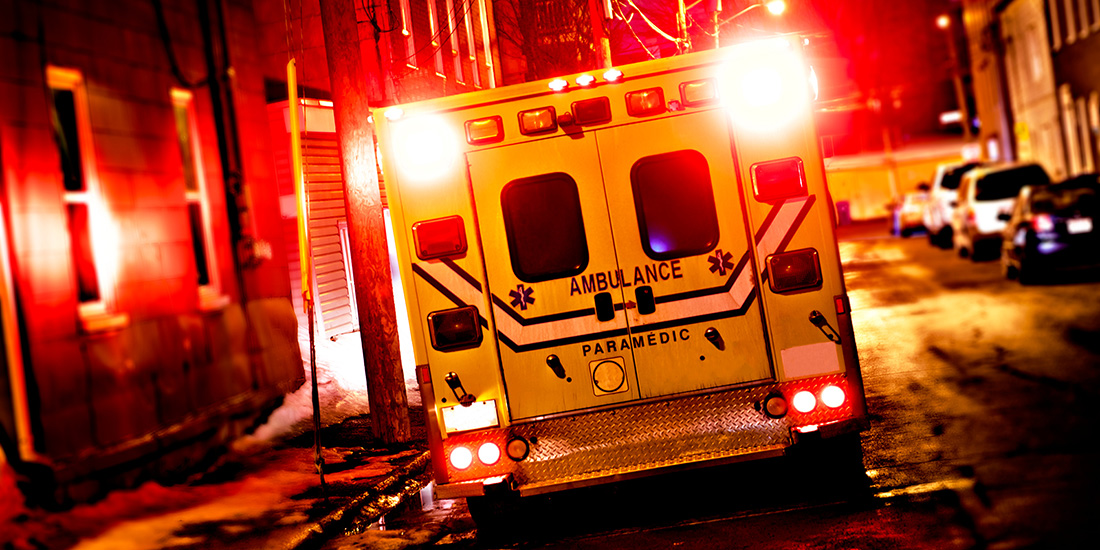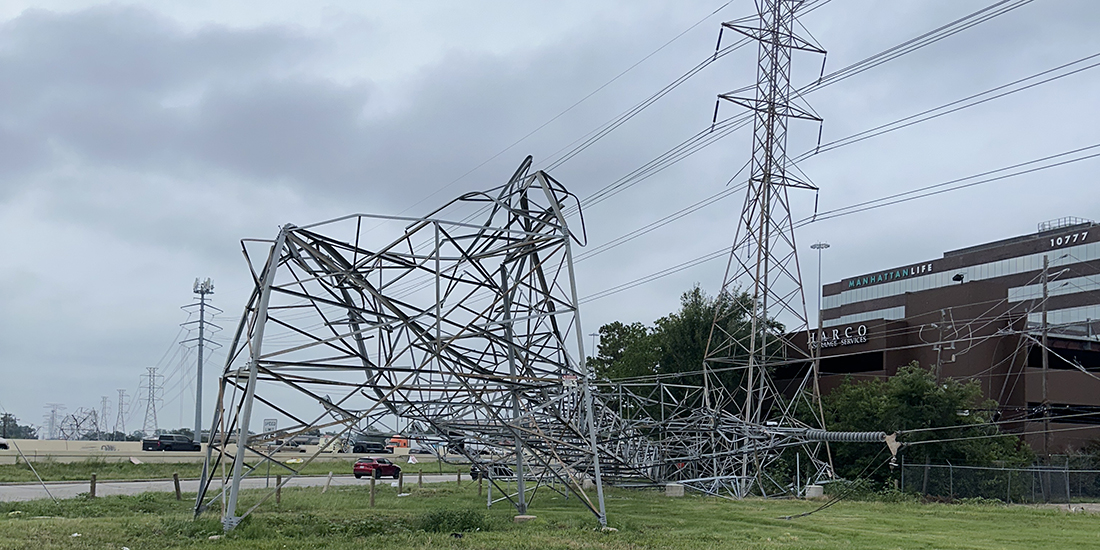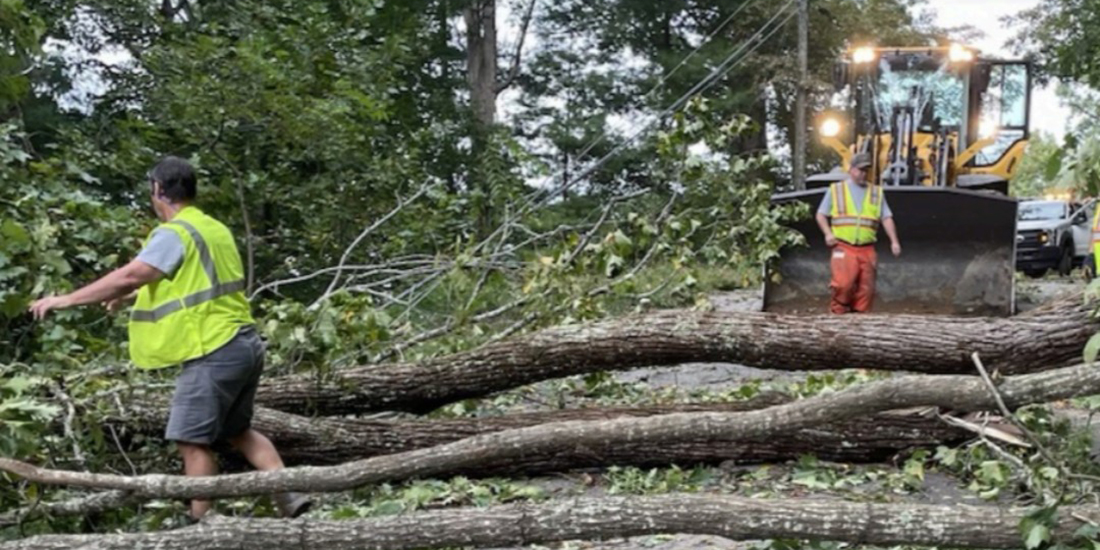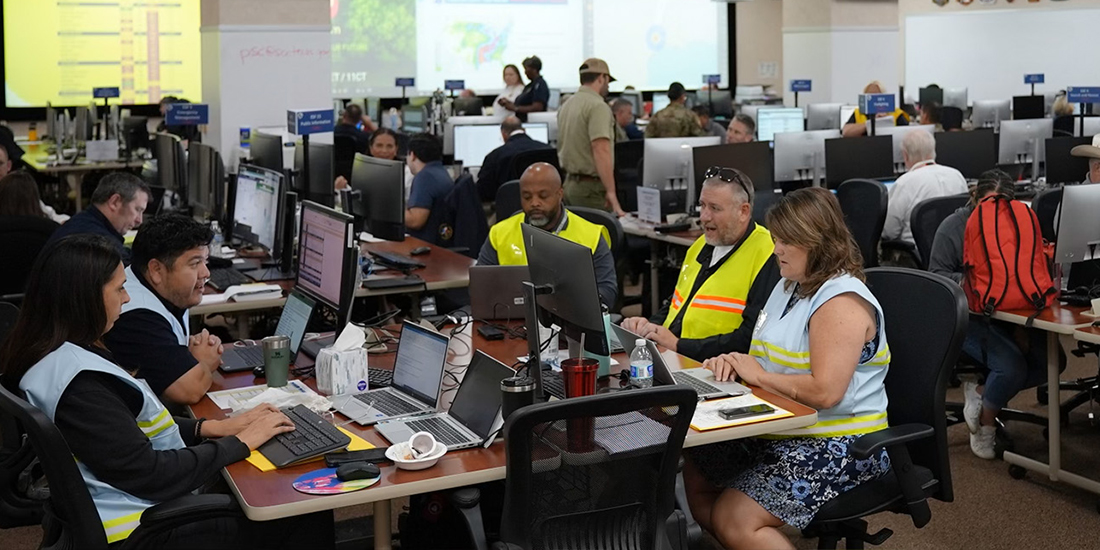Most recently published

Nonmedical Concerns for Hospitals in a Mass-Casualty Incident
Joanmarie Verrico Wallster and Michael Prasad
January 22, 2025
Nonmedical concerns such as security and safety, unaccompanied minors, and governmental relations can adversely impact a hospital when responding to a mass-casualty incident. Failure to plan for these issues, including consequence management, could risk life and safety.

The Current State of the Opioid Crisis & Other Emerging Threats
John Johnson
January 22, 2025
Opioid deaths have surged dramatically since the pandemic. Manufacturers exploit legal loopholes and use precursor chemicals that often evade detection and regulation. These new and growing threats present challenges to public safety that demand innovative solutions and a proactive approach.

Advisory Board Spotlight: Interview with Major Rhonda Lawson
Major Rhonda Lawson
January 22, 2025
Rhonda Lawson is a major in the chief’s office of the Texas Highway Patrol (THP) Division. She began her 27-year career with the Texas Department of Public Safety in 1997 as a trooper. In 2012, Lawson transferred to the Texas Division of Emergency Management as captain and deputy Operations Section

Preparing for the Next Biothreat: Lessons Not to Forget
Christy Anderson
January 15, 2025
In 2024, senior officials from hospitals, healthcare organizations, public health, emergency management, and other responder communities convened at two workshops to share the lessons they learned as leaders during the COVID-19 pandemic. Their lessons learned can help communities better prepare for the next biothreat.

Mission Ready Packages: New Possibilities
Kay C. Goss
January 15, 2025
In 2005, the Superdome in New Orleans served as a mass shelter and accommodated over 25,000 people during Hurricane Katrina. Those accommodations, though, were inadequate, with limited power, plumbing, and other resources. To avoid a similar scenario, the Mission Ready Venue Initiative enables stadiums to be a resource for immediate

Evolution of a Critical Emergency Response Tool
Jamie Hannan and Kristina Clark
January 8, 2025
During a derecho in May 2024, Texas agencies contacted and conducted wellness checks on residents with disabilities or with functional and access needs. One tool facilitated the process, sharing critical information about registrants to the emergency responders and planners who needed to know.

Why Public Works Needs a Seat at the Planning Table
Greg Hoffnung
January 8, 2025
Despite their critical role in disaster response, public works agencies are not always included in the emergency planning process. To bridge planning gaps, public works should be integrated into emergency response efforts. Key steps can help ensure that these and other agencies can more effectively respond to the next disaster.

A Data-Driven Approach to Police Recruitment and Retention
Glenn Fueston and Michael Breslin
December 26, 2024
From the rise of advanced criminal networks and borderless crimes to the persistent hurdles of limited resources, inadequate training, and outdated tools, law enforcement departments navigate an increasingly demanding landscape. Big data and artificial intelligence can help build and maintain this critical public safety workforce.

The Role of AI in Meeting a Great Emergency Management Challenge
Douglas Yeung and Aaron Clark-Ginsberg
December 26, 2024
AI’s ability to ingest and synthesize data on hazards and vulnerabilities could prove invaluable in addressing one of the biggest long-standing challenges of emergency management: truly engaging the whole community.

Editor’s Note: Preparing for the Future of Artificial Intelligence
Catherine L. Feinman
December 25, 2024
The December 2024 edition of the Domestic Preparedness Journal provides insight into the intersection of AI and emergency preparedness. With their exponentially increasing speed of development, existing, emerging, and not-yet-created technologies must all be part of the planning process in 2025 and beyond.

Introducing AI to the Emergency Management Workforce: A Case Study
Lenora G. Borchardt
December 18, 2024
AI can contribute to professional competency and learners’ success while efficiently training emergency management professionals and managing the bottom line.

Opportunities for Artificial Intelligence in Emergency Management
Alex Hagen and Jonathan (Jon) Barr
December 18, 2024
Recent research into the relationship between AI and emergency management uncovered an environment prepared for AI-based solutions. While AI must overcome some infrastructure hurdles, technologies to prevent, mitigate, and recover from emergencies are on the horizon.

All at Once: Multi-Incident Simultaneous Response and Recovery
Tucker Berry
January 29, 2025
As demonstrated by hurricanes Helene and Milton, jurisdictions unaccustomed to compounding incidents can bolster their readiness to simultaneously respond and recover by proactively examining and preparing for unique challenges posed by such a scenario.

Nonmedical Concerns for Hospitals in a Mass-Casualty Incident
Joanmarie Verrico Wallster and Michael Prasad
January 22, 2025
Nonmedical concerns such as security and safety, unaccompanied minors, and governmental relations can adversely impact a hospital when responding to a mass-casualty incident. Failure to plan for these issues, including consequence management, could risk life and safety.

The Current State of the Opioid Crisis & Other Emerging Threats
John Johnson
January 22, 2025
Opioid deaths have surged dramatically since the pandemic. Manufacturers exploit legal loopholes and use precursor chemicals that often evade detection and regulation. These new and growing threats present challenges to public safety that demand innovative solutions and a proactive approach.

Advisory Board Spotlight: Interview with Major Rhonda Lawson
Major Rhonda Lawson
January 22, 2025
Rhonda Lawson is a major in the chief’s office of the Texas Highway Patrol (THP) Division. She began her 27-year career with the Texas Department of Public Safety in 1997 as a trooper. In 2012, Lawson transferred to the Texas Division of Emergency Management as captain and deputy Operations Section

Preparing for the Next Biothreat: Lessons Not to Forget
Christy Anderson
January 15, 2025
In 2024, senior officials from hospitals, healthcare organizations, public health, emergency management, and other responder communities convened at two workshops to share the lessons they learned as leaders during the COVID-19 pandemic. Their lessons learned can help communities better prepare for the next biothreat.

Mission Ready Packages: New Possibilities
Kay C. Goss
January 15, 2025
In 2005, the Superdome in New Orleans served as a mass shelter and accommodated over 25,000 people during Hurricane Katrina. Those accommodations, though, were inadequate, with limited power, plumbing, and other resources. To avoid a similar scenario, the Mission Ready Venue Initiative enables stadiums to be a resource for immediate

Evolution of a Critical Emergency Response Tool
Jamie Hannan and Kristina Clark
January 8, 2025
During a derecho in May 2024, Texas agencies contacted and conducted wellness checks on residents with disabilities or with functional and access needs. One tool facilitated the process, sharing critical information about registrants to the emergency responders and planners who needed to know.

Why Public Works Needs a Seat at the Planning Table
Greg Hoffnung
January 8, 2025
Despite their critical role in disaster response, public works agencies are not always included in the emergency planning process. To bridge planning gaps, public works should be integrated into emergency response efforts. Key steps can help ensure that these and other agencies can more effectively respond to the next disaster.

A Data-Driven Approach to Police Recruitment and Retention
Glenn Fueston and Michael Breslin
December 26, 2024
From the rise of advanced criminal networks and borderless crimes to the persistent hurdles of limited resources, inadequate training, and outdated tools, law enforcement departments navigate an increasingly demanding landscape. Big data and artificial intelligence can help build and maintain this critical public safety workforce.

The Role of AI in Meeting a Great Emergency Management Challenge
Douglas Yeung and Aaron Clark-Ginsberg
December 26, 2024
AI’s ability to ingest and synthesize data on hazards and vulnerabilities could prove invaluable in addressing one of the biggest long-standing challenges of emergency management: truly engaging the whole community.

Editor’s Note: Preparing for the Future of Artificial Intelligence
Catherine L. Feinman
December 25, 2024
The December 2024 edition of the Domestic Preparedness Journal provides insight into the intersection of AI and emergency preparedness. With their exponentially increasing speed of development, existing, emerging, and not-yet-created technologies must all be part of the planning process in 2025 and beyond.

Introducing AI to the Emergency Management Workforce: A Case Study
Lenora G. Borchardt
December 18, 2024
AI can contribute to professional competency and learners’ success while efficiently training emergency management professionals and managing the bottom line.
From Today to Tomorrow: The Emergency Operations Center of the Future
Nick Betzsold and Grant Tietje
December 11, 2024
The next-generation EOC, which implements cutting-edge technology and AI, does not promise perfect disaster management, but it does mean responders at all levels will have better situational awareness, plan more efficiently, and act faster.
Advisory Board Spotlight: Interview with Caroline Agarabi, Ph.D.
Caroline Agarabi
December 4, 2024
What does it take to bridge science and strategy in the world of emergency preparedness? Caroline Agarabi, Ph.D., shares how her work shapes disaster response plans, supports lifesaving countermeasures, and prepares communities for the unexpected. Dive into her unique journey and insights in this compelling conversation.
Protecting Critical Infrastructure From Weaponized Drones
David Winks, Steve Chill, Frederick Ferrer, Michael J. "Apollo" Lovell, Mike Swearingen and Mary Lasky
December 4, 2024
Electricity substations are traditionally only protected by chain link fences and signage warning of the dangers of high voltage. However, this still leaves property vulnerable, especially to weaponized drones attacking from above, a mode of terrorism being used more extensively across the world and at home.
Editor’s Note: Giving Thanks for the Planners
Catherine L. Feinman
November 27, 2024
In this November edition of the Domestic Preparedness Journal, get a glimpse into securing New York City’s largest events. In addition, this month’s authors clarify the misconceptions and realities of human trafficking, explain why messaging matters, share about self-care during deployments, and warn of threats that communities across the country
Why Messaging Matters: A Regionalized Approach to Alerts and Warnings
Soraya Sutherlin
November 27, 2024
Effective, timely, and unified communication across jurisdictions is essential for saving lives. The 2015 ExxonMobil refinery explosion highlighted the urgent need for coordinated, cross-jurisdictional alerting. Emergency managers, public safety officials, and policymakers must come together to prioritize a fully integrated alerting system. It is no longer a luxury but a
The Nexus Between Major Events and Human Trafficking
Madeline Mann and Lindsey Lane
November 27, 2024
Most available data do not support the misconception that large-scale events lead to increased human trafficking. Rather, available evidence underscores a harsh truth: Human trafficking is a pervasive problem every day, not just when large events come to town.
A Violent Surge – Sovereign Citizens vs. Government Authority
Anthony (Tony) Mottola and Richard Schoeberl
November 20, 2024
The Federal Bureau of Investigation has classified the Sovereign Citizen movement as a domestic terrorist threat. To prepare law enforcement officials and other public safety agencies for the risks associated with this movement, agencies need to revise policies, procedures, and training to be more effective in handling encounters with extremist
Advice for Surviving a Disaster: Be Selfish and Small-Minded
David C. Williams II
November 13, 2024
In the base camp of his fifth federally declared disaster this year, a disaster finance coordinator reflects on a friend’s recent question: “How can I best help in a disaster?” His answer might be surprising: be selfish and small-minded.
A Look Behind Security Management at Two Iconic Holiday Celebrations
Inés Bebea
November 13, 2024
After the conclusion of a large-scale event, the planning for its next iteration starts again. If the public doesn’t notice emergency management’s moving parts during an event, it’s a success.
Advisory Board Spotlight: Interview with Robert DesRosier Sr.
Robert DesRosier Sr.
November 6, 2024
Robert DesRosier Sr., former director of Blackfeet Tribal Emergency Management and Homeland Security, discussed his journey into emergency management with Domestic Preparedness Journal editor Catherine Feinman. Beginning with his career as a first responder and his role in the Blackfeet Nation, he highlighted the importance of domestic preparedness and
Growing Foreign Threats to National Security, Part 2: Emergency Management Approaches and Choices
Glen Woodbury
October 30, 2024
This is Part 2 of a two-part article that explores the nation-state threat and its implications for the emergency management community regarding the operations, resilience, resourcing, strategies, and policies necessary to better prepare for future events.
Local-Level Planning for National-Level Threats
Catherine L. Feinman
October 30, 2024
The authors in this October edition of the Domestic Preparedness Journal share their knowledge and best practices for protecting communities from cybercriminals, nation-state threat actors, and transnational criminal organizations. These threats, which used to be typically handled at the state and national levels, are now local-level concerns that require robust
Follow Us
Get Instant Access
Subscribe today to Domestic Preparedness and get real-world insights for safer communities.


